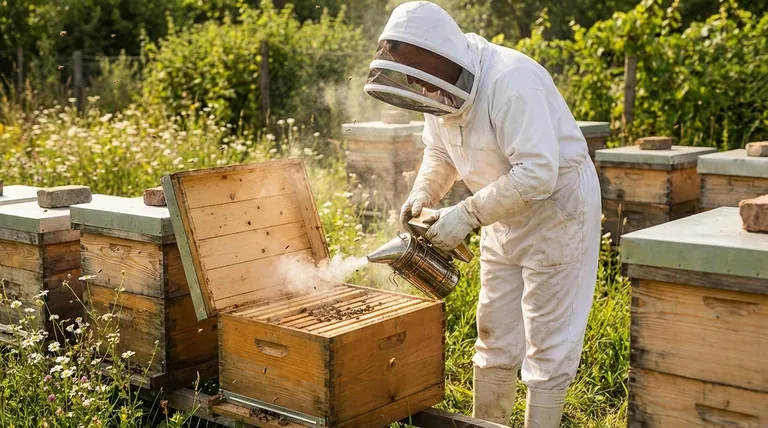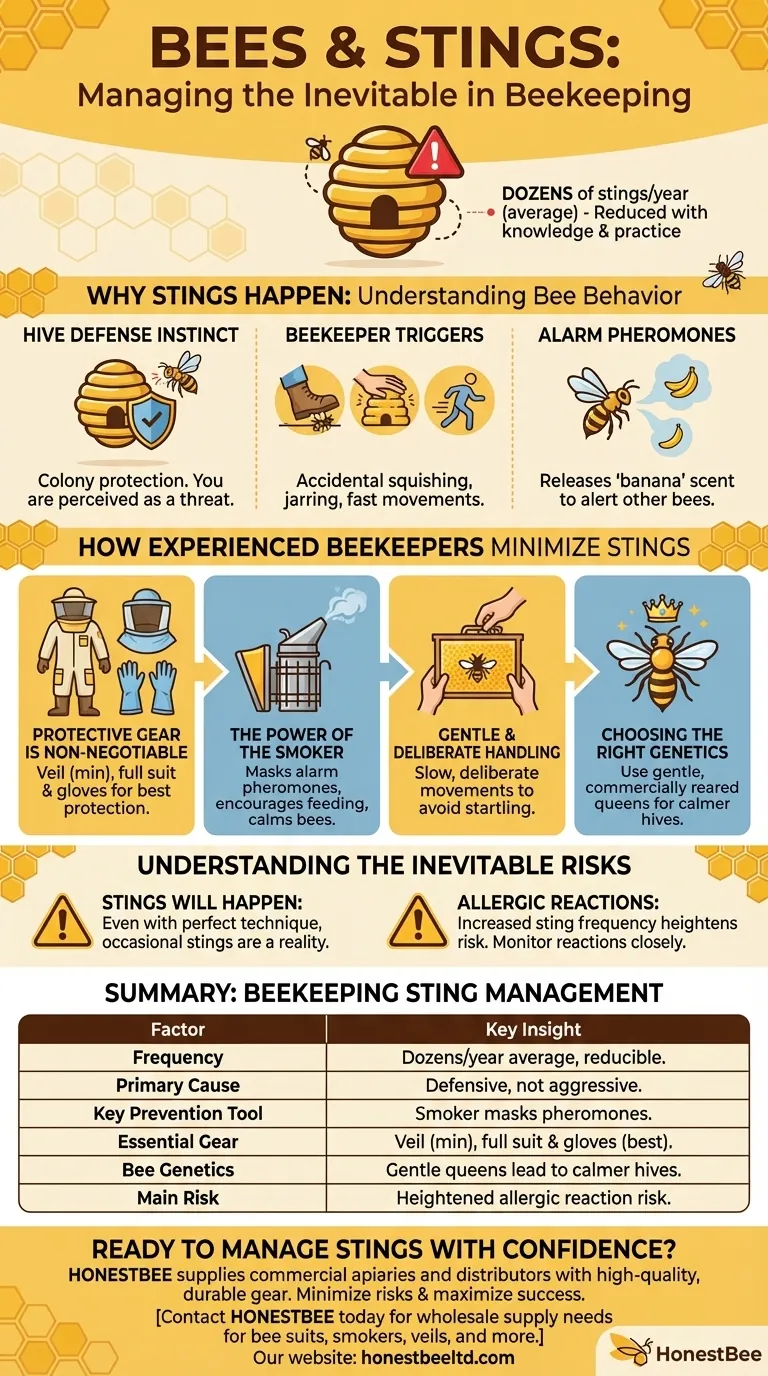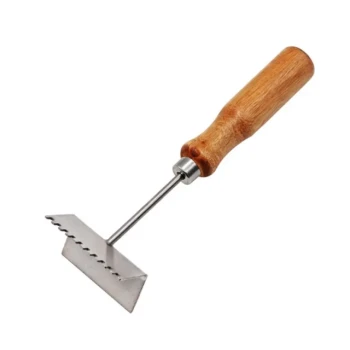Yes, getting stung is an expected part of beekeeping. While it doesn't happen every time you open a hive, it is an occupational hazard. On average, a beekeeper can expect to be stung dozens of times per year, though this number can be significantly reduced with the right knowledge and practices.
The core reality of beekeeping isn't avoiding stings altogether, but learning how to minimize their frequency and severity. It's a manageable risk that you control through your equipment, technique, and understanding of bee behavior.

Why Stings Happen: Understanding Bee Behavior
To manage stings, you must first understand that bees don't sting out of aggression. They sting as a defensive last resort to protect their colony.
The Hive's Defense Instinct
A honeybee colony is a single superorganism. When you open a hive, the bees perceive you as a potential threat to their queen, food stores, and young. A sting is their primary way of neutralizing that threat.
Common Beekeeper-Induced Triggers
Most stings are a direct reaction to a beekeeper's actions. Common triggers include accidentally squishing a bee, jarring the hive, or making fast, threatening movements.
The Role of Alarm Pheromones
When a honeybee stings, it releases an alarm pheromone that smells like bananas. This chemical signal alerts other bees to the threat, sometimes inciting a chain reaction of defensive stings in the same area.
How Experienced Beekeepers Minimize Stings
Experienced beekeepers aren't immune to stings; they are simply masters of prevention. They rely on a combination of tools and techniques to keep their bees calm.
Protective Gear is Non-Negotiable
The most basic tool is personal protective equipment (PPE). A veil is the absolute minimum requirement to protect your face and neck, but most beekeepers use full suits and gloves for comprehensive protection.
The Power of the Smoker
A smoker is a beekeeper's most essential tool for calming bees. The cool, white smoke masks the alarm pheromones, interrupting the bees' defensive communication and encouraging them to eat honey, which makes them more docile.
Gentle and Deliberate Handling
Your movements are critical. Beekeepers learn to move slowly and deliberately around the hive. Every action, from lifting a frame to closing the lid, is done with care to avoid startling or crushing bees.
Choosing the Right Bee Genetics
Not all bees are the same. Beekeepers can significantly influence the temperament of their hives by using gentle, commercially reared queens. Good genetics lead to calmer, more manageable colonies.
Understanding the Inevitable Risks
Even with perfect technique, stings are a reality. Understanding the associated risks is a crucial part of responsible beekeeping.
Stings Will Eventually Happen
You can do everything right and still get stung. A bee can get trapped in a fold of your suit, or you might miss a small hole in your glove. Accepting this is the first step.
The Serious Risk of Allergic Reactions
The most significant risk is developing an allergy. Because beekeepers are stung more often, they have a heightened risk of becoming allergic. It is critical to monitor your body's reaction to every sting, especially when you are just starting.
Making the Right Choice for Your Goal
Your approach to managing stings depends on your comfort level and goals.
- If your primary focus is maximum safety: Always wear a full, overlapping bee suit with gloves, use a smoker consistently, and start with a bee colony known for its gentle temperament.
- If you are concerned about a potential allergy: Speak with an allergist before starting. When you do begin, be vigilant about your reactions and have an action plan in case of a severe response.
- If your goal is to build confidence and skill: Find an experienced beekeeping mentor. Learning proper handling techniques from a veteran is the fastest way to become comfortable and competent.
Ultimately, managing stings is a core skill that separates a novice from an experienced beekeeper.
Summary Table:
| Beekeeping Sting Management Factor | Key Insight |
|---|---|
| Frequency | Dozens of stings per year is average, but frequency can be greatly reduced. |
| Primary Cause | Bees sting defensively to protect their colony, not out of aggression. |
| Key Prevention Tool | A smoker masks alarm pheromones and calms bees. |
| Essential Gear | A veil is the minimum; a full suit and gloves offer the best protection. |
| Bee Genetics | Choosing gentle, commercially reared queens leads to calmer hives. |
| Main Risk | Beekeepers have a heightened risk of developing an allergic reaction to stings. |
Ready to manage stings with confidence and protect your investment?
As a beekeeper, your safety and the productivity of your apiary are paramount. Proper equipment and supplies are your first line of defense. HONESTBEE supplies commercial apiaries and beekeeping equipment distributors with the high-quality, durable gear needed to work safely and efficiently.
We understand the challenges you face. Let us help you minimize risks and maximize your success.
Contact HONESTBEE today to discuss your wholesale supply needs for bee suits, smokers, veils, and more.
Visual Guide

Related Products
- Cotton Beekeeping Suit and Round Hat with Veil Bee Keeper Protective Gear
- 3 Layer Mesh Vented Sting Proof Beekeeping Suit with Hat and Veil
- Vented Beekeeping Jacket with Hood and Veil for Beekeepers
- Heavy Duty Cowboy Beekeeper Hat with Visibility Veil Outdoor Professional Beekeeping Protective Gear
- Yellow Plastic Bucket Pail Perch for Beekeeping
People Also Ask
- What factors should be considered when choosing a beekeeping suit? Balance Safety, Comfort & Performance
- How should a beekeeping suit be hung to maintain its shape? Protect Your Investment with Proper Storage
- What are the benefits of a fully ventilated beekeeping suit? Stay Cool and Protected in Hot Climates
- What is recommended for beginners in beekeeping regarding protective clothing? A Complete Safety Guide for New Beekeepers
- Do beekeeping suits completely prevent stings? Maximize Your Apiary Safety with the Right Gear



















